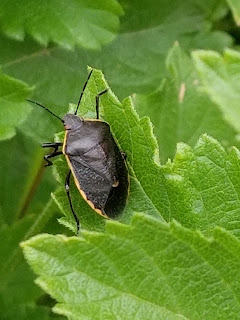An outbreak of walnut caterpillars has recently been reported in Fort Bend county. These caterpillars can be found on pecan, walnut, and hickory as well as oak, willow and various woody shrubs. Walnut caterpillars have chewing mouthparts and can defoliate trees.
Walnut caterpillars live together in a group after hatching out of the eggs. As they grow, they are reddish-brown and become covered with long, white hairs. Larger larvae are covered in white hair and can grow up to 2 inches long.
 |
| Walnut caterpillar larvae first instar and egg mass. Photo by Bill Ree. |
The way damage appears depends upon the stage of caterpillar you have. Young caterpillars only feed on soft tissue of foliage, so you get skeletonized leaves. Older larvae eat all parts of the leaf. The majority of damage is caused by the last few instars of the caterpillar. This leads to the conclusion that scouting for these insects early and often can help you control walnut caterpillars before too much damage occurs.
If you discover egg masses or newly hatched larvae in a cluster, you can remove the infested leaves by hand and dispose of them in a sealed plastic bag. Groups of caterpillars found on the tree trunk or branches while they are molting can be squished or treated with insecticide.
 |
| Walnut caterpillar larvae third instar. Photo by Bill Ree. |
If walnut caterpillars are found on your trees, then you can treat them with Bacillus thuringiensis var. kurstaki which is a product that targets caterpillars. Other possible active ingredients that can be used include: spinosad, azadirachtin (neem), pyrethrins, or a pyrethroid product.
If you have an outbreak of walnut caterpillars, please contact
Bill Ree as he is tracking this information.










